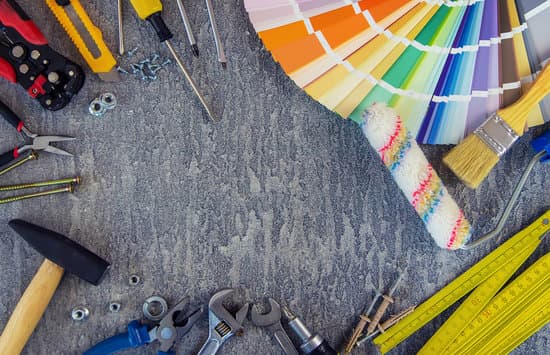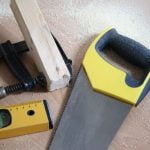Can you take out a mortgage for home improvements? Many homeowners often consider this option as a means to fund renovations and upgrades to their properties. Understanding the purpose behind taking out a mortgage for home improvements is essential in making an informed decision about your financial investments. In this article, we will explore the reasons why individuals choose to pursue this avenue and the benefits it can offer.
When it comes to financing home improvement projects, there are various types of mortgages available for homeowners to consider. From cash-out refinancing to home equity loans and lines of credit, each option has its own benefits and considerations. It’s important to understand the differences between these options in order to make an informed decision that aligns with your specific financial needs.
Eligibility requirements play a crucial role in determining whether individuals can take out a mortgage for home improvements. Factors such as credit score, income, and existing home equity will all be taken into consideration by lenders. By understanding these eligibility requirements, homeowners can better prepare themselves for the application process and increase their chances of being approved for a mortgage for home improvements.
Types of Mortgages Available
When considering a mortgage for home improvements, it is essential to explore the different types of mortgages available and understand their specific features. One popular option is cash-out refinancing, which involves taking out a new mortgage that is more substantial than the existing loan and using the difference to fund home renovations. This type of mortgage allows homeowners to access a portion of their home’s equity in cash, providing flexibility in financing improvement projects.
Another common choice for funding home improvements is through home equity loans. These are fixed-rate loans that allow homeowners to borrow against the equity in their property, with the loan amount based on the value of the home. The advantage of this type of mortgage is that it provides a lump sum upfront, making it suitable for one-time renovation projects with predictable costs.
Additionally, home equity lines of credit (HELOC) offer a revolving line of credit that allows homeowners to borrow multiple times up to a certain limit while using their home as collateral. This type of mortgage gives individuals access to funds as needed during the draw period, making it an attractive option for ongoing or unpredictable home improvement projects.
It’s important to compare these different types of mortgages carefully and consider factors such as interest rates, repayment terms, and borrowing limits before deciding which one best suits your needs for financing home improvements.
| Types of Mortgages | Features |
|---|---|
| Cash-Out Refinancing | Accesses a portion of home’s equity in cash |
| Home Equity Loans | Provides lump sum upfront based on property value |
| Home Equity Lines of Credit (HELOC) | Offers revolving line of credit during draw period |
Eligibility and Requirements
When considering taking out a mortgage for home improvements, it is essential to understand the eligibility requirements involved in the process. Here is a comprehensive guide to help you determine if you meet the necessary criteria:
- Credit Score: Lenders typically require a good credit score to approve a mortgage for home improvements. A higher credit score demonstrates your ability to manage debt responsibly and indicates lower risk for the lender. While specific credit score requirements may vary between lenders, aiming for a score of at least 620 or higher is generally advisable.
- Income: Your income plays a crucial role in determining whether you are eligible for a mortgage for home improvements. Lenders will assess your income stability, employment status, and debt-to-income ratio to ensure that you have the financial capacity to repay the loan.
- Home Equity: The amount of equity you have in your home will also impact your eligibility for a mortgage. Home equity is calculated by subtracting the outstanding mortgage balance from the current market value of your home. Generally, the more equity you have, the better your chances of obtaining favorable terms and loan options.
Meeting these eligibility requirements can significantly increase your chances of being approved for a mortgage tailored to home improvement projects.
Understanding these requirements and evaluating your own financial situation carefully will help you make an informed decision when considering taking out a mortgage for home improvements. Remember that each lender may have specific criteria, so it’s important to shop around, compare offers, and choose the option that best suits your needs and financial capabilities.
Pros and Cons
When considering using a mortgage for home improvements, it is essential to weigh the advantages and disadvantages of this financing option. Understanding the potential benefits and risks can help individuals make an informed decision about whether taking out a mortgage is the right choice for their specific situation.
Advantages
One of the primary benefits of using a mortgage for home improvements is that it allows homeowners to access a substantial amount of funds, often at lower interest rates compared to other types of loans. This can be advantageous when undertaking significant renovation projects that require a significant upfront investment. Additionally, spreading the repayment over a more extended period through a mortgage can make it easier to manage monthly payments, especially if the improvements increase the value of the home.
Another advantage is that the interest paid on a mortgage for home improvements may be tax-deductible, providing potential financial benefits to homeowners. Furthermore, by leveraging the equity in their property, individuals may be able to access better loan terms and higher borrowing limits than with other types of financing.
Disadvantages
However, there are also several disadvantages to consider when using a mortgage for home improvements. One key drawback is that by securing the loan with their home as collateral, borrowers are putting their property at risk. If they are unable to meet the repayment terms, they could face foreclosure and lose their home.
Additionally, while mortgages offer lower interest rates compared to unsecured loans, individuals may end up paying more in interest over time due to the longer repayment period. It is crucial to carefully assess whether taking out a mortgage aligns with long-term financial goals and whether there are alternative financing options available that may be more suitable for specific renovation projects or financial situations.
Overall, understanding both the advantages and disadvantages of using a mortgage for home improvements is critical in making an informed decision about how best to finance renovations.
Application Process
When considering taking out a mortgage for home improvements, it is essential to understand the application process to ensure a smooth and successful experience. The application process for a mortgage for home improvements involves several steps, from gathering documentation to approval and funding, and requires careful attention to detail.
Documentation Required
Before applying for a mortgage for home improvements, it is crucial to assemble the necessary documentation to support your application. This typically includes proof of income, such as pay stubs or tax returns, as well as documentation of your existing mortgage, if applicable. Additionally, you may need to provide estimates or quotes for the planned home improvement project, along with details of any contractors or professionals involved.
Approval and Funding Timeline
Once your application for a mortgage for home improvements has been submitted, the approval and funding timeline can vary depending on the type of mortgage and lender. Generally, the approval process involves a thorough review of your financial situation, credit history, and the proposed home improvement project. Once approved, funding for the project will be made available either in a lump sum or through scheduled disbursements.
Additional Considerations
It is important to note that during the application process for a mortgage for home improvements, lenders may also consider factors such as your debt-to-income ratio and overall financial stability. It is advisable to maintain open communication with your lender throughout the process and be prepared to address any additional requests for information or documentation promptly.
By understanding the documentation required and being aware of the approval and funding timeline, you can navigate the application process for a mortgage for home improvements with confidence.
Budgeting and Planning
Prioritizing renovations is another essential aspect of budgeting and planning. It’s crucial to identify which improvements are the most urgent or will add the most value to your home. This may include focusing on essential repairs such as fixing structural issues, updating major systems like plumbing or electrical, or making enhancements that will significantly increase the resale value of your property.
Managing expenses throughout the home improvement project is also vital. Unexpected costs can arise, so having a contingency fund in place is prudent. Additionally, tracking expenses closely and staying within budget will help ensure that you make the most of your mortgage funds without overspending. Implementing cost-saving measures where possible, such as DIY work for non-structural improvements or opting for more affordable materials, can also help stretch your budget further.
| Aspect | Considerations |
|---|---|
| Estimating Costs | Getting accurate quotes, comparing prices, exploring financing options. |
| Prioritizing Renovations | Identifying urgent repairs, updating major systems, increasing property value. |
| Managing Expenses | Holding a contingency fund, tracking expenses closely staying within budget. |
Alternatives to Mortgages
When considering home improvements, many homeowners may hesitate to take out a mortgage and prefer to explore alternative financing options. There are several alternatives to mortgages that can provide the necessary funds for renovating or upgrading a property. It’s important to understand these alternative options and evaluate them in comparison to taking out a mortgage for home improvements.
One alternative financing option for home improvements is obtaining a personal loan. Personal loans are unsecured loans that are not tied to any specific asset, such as a home or car. They can be used for various purposes, including home renovations, and typically have fixed interest rates and repayment terms.
Another alternative is government grants, which are funds provided by the government for specific purposes, such as energy-efficient upgrades or accessibility modifications. These grants do not require repayment and can significantly reduce the financial burden of home improvement projects.
Additionally, some homeowners may choose to use their savings as an alternative financing option for home improvements. This approach eliminates the need to incur debt or pay interest on a loan, but it may deplete savings that could be used for other emergencies or investments. When comparing these alternatives to taking out a mortgage for home improvements, it is essential to consider factors such as interest rates, repayment terms, eligibility requirements, and long-term financial implications.
Ultimately, exploring alternative financing options alongside mortgages allows homeowners to make informed decisions based on their individual financial circumstances and goals. By carefully evaluating each option and its associated benefits and risks, individuals can determine the most suitable approach for funding their home improvement projects while maintaining their overall financial well-being.
- Personal Loans
- Government Grants
- Savings
Case Studies
In conclusion, taking out a mortgage for home improvements can be a viable option for homeowners looking to renovate or upgrade their properties. By leveraging the equity in their homes, individuals have the opportunity to access large sums of money at relatively low interest rates compared to other forms of financing. This can make it an attractive option for those looking to undertake major home improvement projects that require significant funding.
However, there are both advantages and disadvantages to consider when using a mortgage for home improvements. While the lower interest rates and potential tax benefits are appealing, homeowners must also be aware of the risks involved, such as potentially putting their homes at risk if they fail to meet repayment obligations. It is essential for individuals to carefully weigh these factors and consider alternative financing options before making a decision.
Ultimately, the decision to take out a mortgage for home improvements should be based on the specific needs and financial circumstances of each homeowner. By thoroughly understanding the purpose, types of mortgages available, eligibility requirements, pros and cons, application process, budgeting and planning tips, as well as exploring alternatives to mortgages through real-life case studies, individuals can make informed decisions when considering this financing option for their home improvement projects.

I’m thrilled to have you here as a part of the Remodeling Top community. This is where my journey as an architect and remodeling enthusiast intersects with your passion for transforming houses into dream homes.





